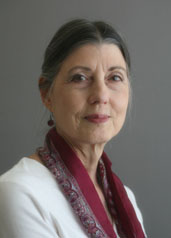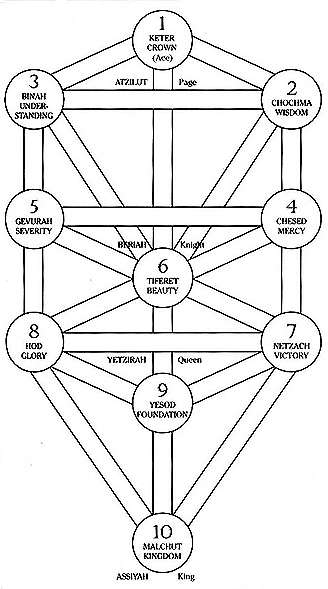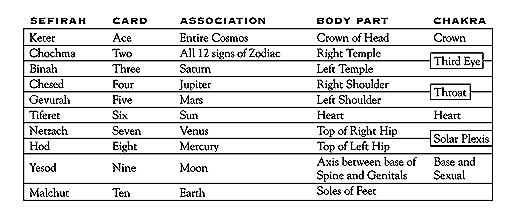By John P. O'Grady
Originally printed in the JULY-AUGUST 2008 issue of Quest magazine.
Citation: O'Grady, John P. "The Outside Lands: Astrology and Taboo." Quest 96.4 (JULY-AUGUST 2008):143-147.

WHERE ON THE MAP of our contemporary cultural landscape would the practice of astrology be located? Certainly nowhere near the center, amid the skyscrapers of commerce and the ivory towers of academe. Nor will it appear among the trim houses and shopping malls of suburbia. Look instead toward the fringes, in the same far-flung and forgotten spaces occupied by city dumps, auto junkyards, and hazardous waste depositories. Yet even these extravagant reaches are not the proper place of astrology. The investigating eye must travel further still, over the edge and into the air. What we seek is not on this map. Astrology is elsewhere.
In the workaday world, the shopworn dictum of general semantics still applies: "The map is not the territory." But when it comes to the "Outside Lands" of the human mind—which is where astrology abides—the map is the territory, and then some. These districts are more commonly known as the imagination, or to use Henry Corbin's precise term, the "epiphanic place of the images." Astrology, like all forms of creative activity—poetry, painting, music, just to name a few—is a method for reasonable minds to extend a grasp beyond reason. Reason, that frontier William Blake called "the bound or outward circumference of Energy" in The Marriage of Heaven and Hell. Astrology takes place in an intellectual terrain vague, where common sense—for good reason, I suppose—sets up its "No Trespassing" signs and chain-link fences topped with razor wire. Every edge is perilous, not to mention, ambiguous. Step over this threshold and roads disappear, trails go unmaintained. Treacherous flora and fauna abound. Who knows what to expect? If you get into trouble out here, no rescue party will show up. It is no place for the unwary.
For the most part, the intelligentsia regards those who practice astrology as inhabiting a kind of mental Superfund site. The academic pundits would have you believe some of the most toxic varieties of thinking occur here, requiring concerted effort on the part of society to clean up. According to one prominent twentieth-century intellectual, Theodor Adorno, astrology is a "metaphysic of dunces." The Sorbonne's granting of a Ph.D. in 2001 for a thesis on the subject of astrology was met with a fury of academic criticism. Lamented Emily Eakin, a French sociologist: "I personally consider this defense a blow to our discipline and an insult to those who do their work properly." One of the more renowned contemporary skeptics is British professor, Richard Dawkins, who becomes discomposed at the very mention of astrology, calling it an "aesthetic affront." With menace reminiscent of Socrates' nastier interlocutors, he wonders why "are professional astrologers not jailed for fraud?" Passion such as this, even when expressed in the coolest of scientific tones, suggests that the practice of astrology must be in high violation of some taboo.
For a long time, I worked as a tenured professor of literature. Then one day I decided to leave the academy for more creative endeavors, including the practice of astrology. Once my colleagues figured out I was serious, they were aghast. You would have thought I had just announced plans to become an asbestos salesman or a purveyor of pornography. I had broken the academic commandment "Thou shalt not become a soothsayer." I tried explaining that astrology is not fortune-telling, but rather more like the study of poetry: both are concerned with cultivating a more attentive style of reading. Alas, this line of reasoning failed. Poetry is just about as worrisome to English professors as astrology, yet because poetry has long been part of the official curriculum, they are habituated to its threat, much like those who dwell in earthquake country. Even so, I have observed that most literature professors still get nervous whenever poetry's name is mentioned. As far as they are concerned, the Pierian Spring is just another contaminated water supply.
As both anthropology and psychology make clear, a taboo is a stern prohibition against certain persons, places, things, or even ideas that seem imbued with dangerous power. When confronted with something taboo, our response is often deeply conflicted. On the one hand, we may have the sense of being in the presence of the sacred, as if standing before the very engines of the universe and let out with, "Oh, wow!" On the other hand, we might also be overwhelmed with holy dread, a feeling that things here are dangerous, out of control, or unclean which elicits an "Oh, no!" That which is taboo would kill you to look at, for—as both Bible and Emily Dickinson make clear—"none see God and live." At the very least, according to the joyless Freud, violating a taboo renders the violator contagious and irredeemably defiled. In short, taboo is the shadow of order, the prison wall holding back all hell.
Some years ago, the esteemed Mary Douglas pointed out that taboos in a given society have to do with preserving symbolic boundaries. Think of the "great walls" in China, Britain, or Berlin that were built to keep out invading hordes. Or consider the "lesser walls" that today surround our zoos, prisons, military installations, and gated communities. When it comes to the line between certainty and confusion, order and chaos, good fences—we hope—make good neighbors. Such fences, however, require vigilant maintenance on the part of society, because, as Robert Frost phrases it, "Something there is that doesn't love a wall." A carpenter of my acquaintance likes to say, "Show me the walls you erect and I will tell you who you are." He could be a psychotherapist, or a cultural commentator on television.
The walls that house our most firmly held beliefs have no windows. Undistracted by bright light streaming in from the outside, we can kick back in the soft couch of habit and gaze upon our high-definition monitors. Inside our mortgaged House of Belief, each of us feels relaxed and secure. Here is our intellectual comfort zone, our hearth and home, and we furnish it according to our taste, whether it be the Shaker décor of scientific Positivism or the velvety tones of the New Age movement. If we make our way outside, or worse, are cast forth from the House of Belief, we find ourselves bushwhacking in the wild wooly-wags of doubt. Back in 1877, a rogue philosopher by the name of C. S. Peirce published an essay in which he characterizes doubt as "an uneasy and dissatisfied state from which we struggle to free ourselves and pass into the state of belief; while the latter is a calm and satisfactory state which we do not wish to avoid, or to change to a belief in anything else." Peirce calls it doubt, but this bewildering condition sounds much like Corbin's epiphanic place. We can call it the imagination, but I prefer the "Outside Lands."
If your house is located in a neighborhood anywhere near the Outside Lands, you must get used to the visitors from afar who show up at the door, speaking in strange tongues. "We know how to say many false things" declare the Muses in Hesiod's Theogony, "as if they were true, but we know—when we wish—to utter true things." The astrologer—like the poet, the saint, and, we must admit, the lunatic—welcomes these shady characters into the living room, because they come bearing what Plato calls "charms for the soul." But one person's charm is another's dangerous substance, which is why society makes every effort to regulate this traffic in imaginal lures by keeping a close eye on those who have known contacts in the underworld. The saint is stoned, drowned, or burned at the stake. The lunatic is medicated, institutionalized, and stripped of even a nominal connection to the nurturing moon by being reclassified as mentally ill. The poet, too, is institutionalized, albeit more kindly treated when granted a "residency" and tenure in the local university, not to mention a steady paycheck and a benefits package.
When it comes to the threat posed by the astrologer, things are somewhat trickier. As the embarrassing Sorbonne incident makes clear, academia remains ill-disposed toward the study and practice of astrology. In 1991, Kepler College of Astrological Arts and Sciences was founded near Seattle. When the school received preliminary endorsement from the State of Washington's Higher Education Coordinating Board, the chancellor of Boston University, John Silber, lashed out with an op-ed piece in the Boston Herald, declaring: "The promoters of Kepler College have honored Kepler not for his strength but for his weakness, as if a society advocating drunkenness named a school for Ernest Hemingway." Outside the academy, the practice of astrology does not fare much better. If social prestige is any measure, the astrologer enjoys about as much of it as a black market trafficker in plutonium. Thomas Merton once observed that the artist in our society has "inherited the combined functions of hermit, pilgrim, prophet, priest, shaman, sorcerer, soothsayer, alchemist and bonze." He should have added "outlaw."
Whoever would practice astrology must be a mutineer. Genius demands this of any artist. The word genius, in fact, may bring us closer to understanding the fulminations of astrology's antagonists. "Genius" is the Latin translation of the Greek daimon, root of our word "demon." (Recall Carl Sagan's last book, The Demon-Haunted World.) As we use the term today, genius is far removed from its original sense. In former times, you spoke of having a genius as you would of having a friend; nowadays you are a genius, and perhaps all the lonelier for it. In the fourth century BCE, Democritus claimed that the "soul is the dwelling-place of the genius." Maybe that was the case, but today we seem to have evicted our genius, our guardian angel, and sent it packing back to the Outside Lands whence it came. Each of us then occupies his or her own McMansion of an ego, but dwells there all alone. Not to worry, for it is crammed to the ceiling with possessions with more just a mouse-click away.
Once upon a time, human beings understood that happiness was an acquisition obtainable only through proper relationship with the non-human realm which used to be known as the daimonic, now called the divine. Because one's genius was regarded as a personal attendant throughout the course of life, the Romans thought it worthy of veneration. You were expected to offer yearly sacrifices to your genius. One's birth was a particular object of this guardian spirit's care and attention, thus the marriage bed was known as the genial bed. And those who enjoyed a fortunate existence were said to have a genial life. Apparent in these etymological musings is a congenial insight: when it comes to figuring things out, we are never far from spiritual aid. There is a vast unseen community out there just waiting for our renewed attention, but start chatting them up and you risk running afoul of the authorities—sooner breach the fence surrounding a nuclear generating station so you can get inside and play around with the dials. Mary Douglas puts her finger on it when she says that the "same forces that threaten to destroy good order represent the powers inhering in the cosmos" (161). Those who control power within the social structure are usually loath to share any of it.
Thus, it is chancy to play with Promethean fire. Genius, no matter what the form, is rightly approached with caution if not outright trepidation, since it draws power from dark outlets. While society may not nab you for the transgression, what awaits on the other side very well might. Keep this in mind when Hesiod's double-talking Muses come knocking or the charming politician asks for your vote. The nature of this unfathomable energy cannot be explained in the sanctioned terms of rational materialism, the vocabulary of those who speak from endowed chairs in the university. Yet this power is available to any who seek it, as Emerson reminds us, "by unlocking, at all risks, one's human doors, and suffering the ethereal tides to roll and circulate through." Be warned: even a degree from an astrological college is not enough to save you from drowning in these waters.
In early Greece, Simonides of Ceos was a man of genius, a prolific writer of verse, and said to be the first poet ever to take money for his work. Apparently his talent was such that he could induce people into believing that things unreal were real. Only the Thessalians were immune to his verbal conjurings. When asked why this was the case, Simonides' [paraphrased] reply was, "Oh them, they're just too ignorant to be deceived by me." By that he meant they were utterly lacking in imagination. Dull witted people, says Giordano Bruno, "are not soothed by eloquent speech, nor are they won over by beauty, music, painting or by any of the other attractions of nature" (146). Nor do they appreciate astrology.
Nevertheless, the practice of astrology is to be counted among the dwindling options in our society for getting behind the deadening slogans and billboards of everyday life. Grand gifts of healing, prophecy, and leadership only come to those who can get out of their right minds from time to time. The authorities may not like it, but those authorities are not so much "out there" as they are "in here," dressed up in the guises of our own fears, diminished expectations, and seductive sound bites designed to keep us in our place. "The war that matters," writes Diane di Prima, "is the war against the imagination/all others are subsumed in it." Astrology is not a science but an art, an art of surmising. To surmise is to imagine without certain knowledge, to follow the spirit without getting snared in the letter. It is a game of hit-or-miss, hide-and-seek, played in the buzzing thickets of the Outside Lands. "You're really getting at the nerve ends," said Robert Smithson when asked to explain what an artist does, "it is completely unknown territory you're getting into. And that's what's exciting, the whole element of exploration, expedition." Or you could say—with due apologies to Kenneth Burke—that the practice of astrology is part of our "equipment for living," a disaster kit for when the walls of habit come tumbling down.
A curious bit of lore is to be gathered in a certain precinct adjacent to the Outside Lands. It concerns the allurements of mind that each of us is subject to, whether scientist or astrologer, philosopher or debauchee. We are told that when we try to seismically retrofit our House of Belief, it is as if we were binding ourselves with chains. As long as our House of Belief stands, we do not feel these chains as chains, mistaking them as we do for fine threads of silk and strands of cashmere. We love them because they give us pleasure. But when the "Big One" finally hits and the walls of our House of Belief come tumbling down to the ground, the chains suddenly feel hard, and instead of providing pleasure they are now the source of great suffering. At last, we recognize the bonds for what they are.
When that time comes—and it is coming—we will require a new map, something along the lines of a treasure map. Choose carefully, because as Ptolemy warned long ago, "no one presents it rightly unless an artist." This new map may come in the form of a poem, perhaps written on the back of a cocktail napkin or spray-painted on the side of a building. Maybe it will arrive as a song coming over the radio or through a painting hanging on the wall. It might even show up in the much-reviled figure of a horoscope. Who knows? Nobody can say what your new map will look like, but be assured that, sooner or later, it will lead toward the darkling wealth of the Outside Lands
References
Adorno, Theodor. "Theses Against Occultism." 1947. The Stars Down to Earth, and Other Essays on the Irrational in Culture. Ed. Stephen Crook. London: Routledge, 1994.
Bruno, Giordano. "A General Account of Bonding." Cause, Principle and Unity and Essays on Magic. Eds. Richard E. Blackwell and Robert de Lucca. NY: Cambridge University Press, 1998.
Corbin, Henri. "Mundus Imaginalis, or the Imaginary and the Imaginal." http://www.hermetic.com/bey/mundus_imaginalis.htm
Dawkins, Richard. "The Real Romance in the Stars." The Independent on Sunday, December 31, 1995.
di Prima, Diane. "Rant" Pieces of a Song. San Francisco, CA: City Lights Publishers, 1990.
Douglas, Mary. Purity and Danger. London: Routledge & Kegan Paul, 1966.
Eakin, Emily. "Star Wars: Is Astrology Sociology?" New York Times, June 2, 2001.
Emerson, Ralph Waldo. "The Poet." Essays and Lectures: Nature: Addresses and Lectures/Essays: First and Second Series, ed. Joel Porte. NY: Library of America, 1983.
Merton, Thomas. Raids on the Unspeakable. NY: New Directions Publishing Corp, 1996.
Peirce, Charles Sanders. "The Fixation of Belief." Popular Science Monthly 12 (November 1877), 1–15.
Silber, John. "Silliness Under Seattle Stars." Boston Herald, May 16, 2001.
John P. O'Grady has been studying and practicing astrology for more than twenty-five years. A college professor on extended sabbatical, he now lives in San Francisco. He can be contacted at johnpogrady@comcast.net and his web site is http://johnpogrady.com/index.html  .
.



 WELCOME TO THE GREAT ADVENTURE! Together we are about to embark on an exploration of a time-honored facilitator of psychic growth—the Tarot cards. Many facets of the Tarot's origins, history, and evolution remain enmeshed in controversy and mystery. Tarot refers to a deck of seventy-eight pictured cards which most people associate with Gypsy fortune tellers. Others, for various reasons, have traced their origins back to the Egyptians. A more scholarly approach would say that Tarot first appeared in thirteenth-century France, in the still-available Marseilles deck. At that time, they were produced on leather and metal, predating both the invention of paper and the arrival from India of the Gypsies.
WELCOME TO THE GREAT ADVENTURE! Together we are about to embark on an exploration of a time-honored facilitator of psychic growth—the Tarot cards. Many facets of the Tarot's origins, history, and evolution remain enmeshed in controversy and mystery. Tarot refers to a deck of seventy-eight pictured cards which most people associate with Gypsy fortune tellers. Others, for various reasons, have traced their origins back to the Egyptians. A more scholarly approach would say that Tarot first appeared in thirteenth-century France, in the still-available Marseilles deck. At that time, they were produced on leather and metal, predating both the invention of paper and the arrival from India of the Gypsies.
 In assigning the pip cards to the sefirot of the Tree of Life, we introduce a further suggestion that facilitates both understanding and remembering the cards. The implication is that similarly numbered cards of each suit have something in common. And, indeed, what they share is their association with one of the ten sefirot and the distinctive character of that sefirah. If we have understood what the energy of Chesed is, for example, in assigning the fours of each suit to that sefirah, we can say, "Look at the image of the Four of Cups. How does what I know about Chesed (mercy) color my perception of that card? Can I detect the quality of that vessel in the Four of Wands? How does it help me to understand the Four of Swords? How does the nature of Chesed challenge my initial impression of the Four of Pentacles?"
In assigning the pip cards to the sefirot of the Tree of Life, we introduce a further suggestion that facilitates both understanding and remembering the cards. The implication is that similarly numbered cards of each suit have something in common. And, indeed, what they share is their association with one of the ten sefirot and the distinctive character of that sefirah. If we have understood what the energy of Chesed is, for example, in assigning the fours of each suit to that sefirah, we can say, "Look at the image of the Four of Cups. How does what I know about Chesed (mercy) color my perception of that card? Can I detect the quality of that vessel in the Four of Wands? How does it help me to understand the Four of Swords? How does the nature of Chesed challenge my initial impression of the Four of Pentacles?"
